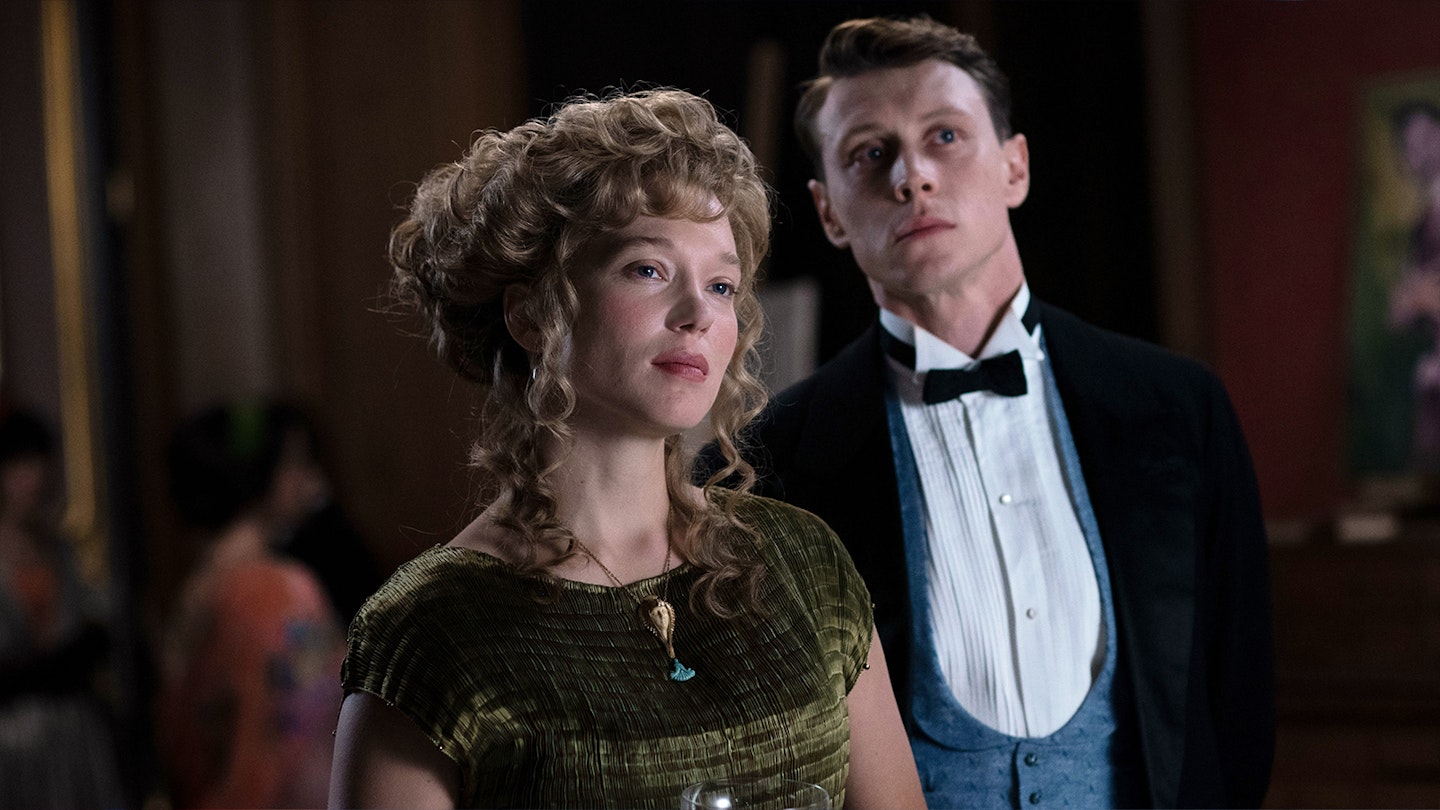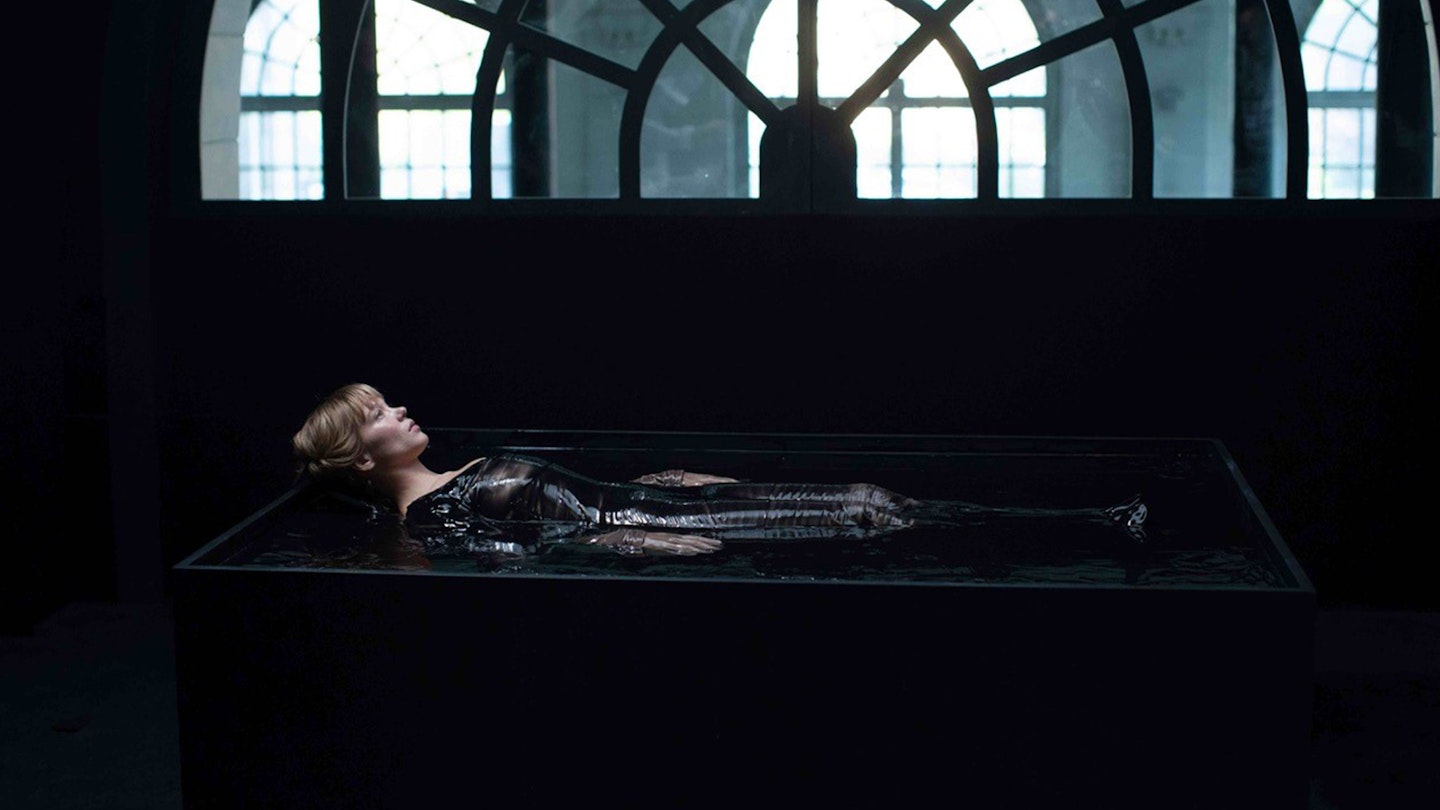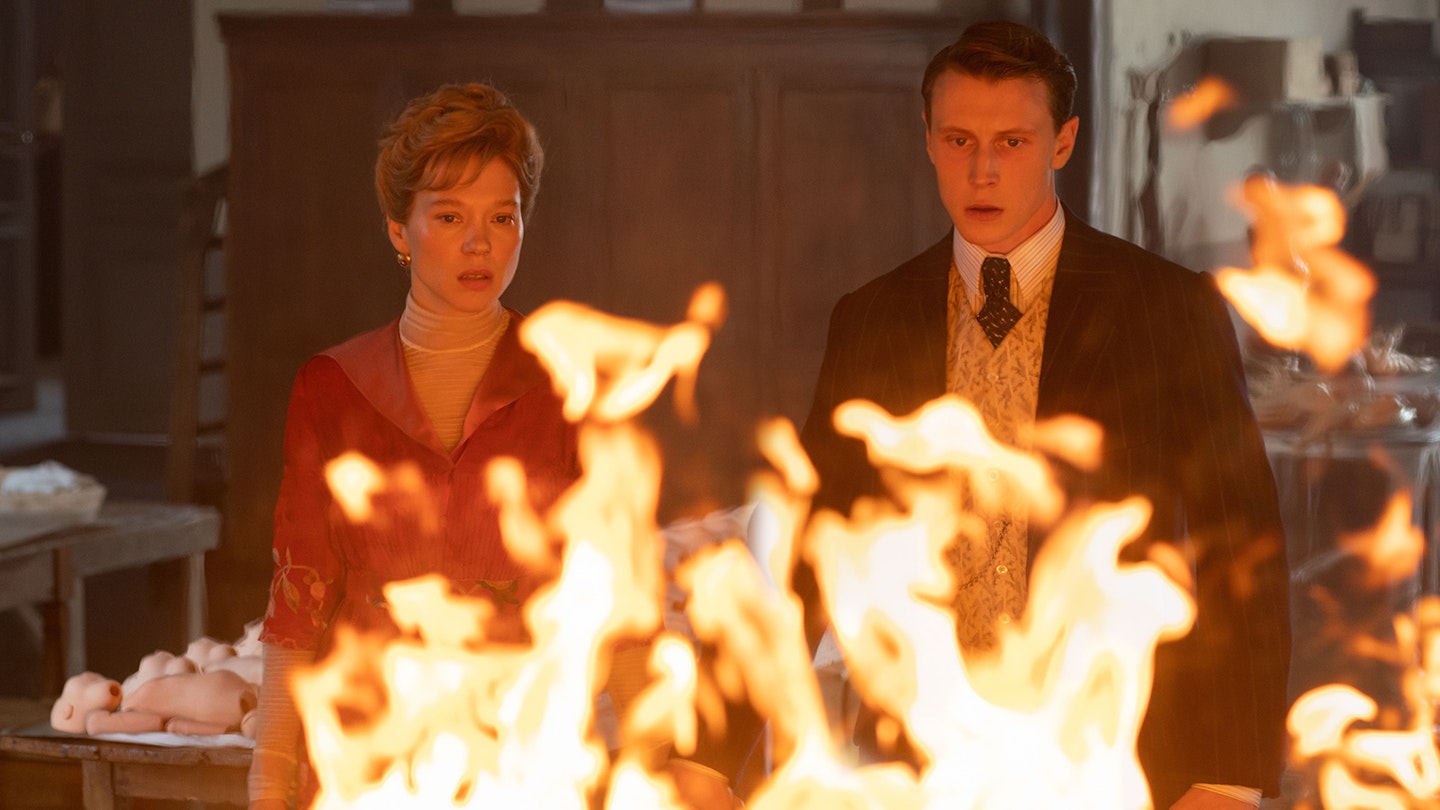Opening with an actress screaming at an invisible attacker while filming a green-screen scene, The Beast immediately reveals its primary ideas: the eeriness of technological advancement, a feeling of deep anguish at a terror that isn’t really there, and the interaction between the two. Bertrand Bonello’s sci-fi — in which two people, Gabrielle (Léa Seydoux) and Louis (George MacKay), meet in different eras — is an extraordinary excavation of the role technology plays in causing emotional mayhem, and a clarion call to those who would use it as a stand-in during daily human life.

If that sounds complicated, then buckle up: with three timelines and endless recurring symbolism, The Beast is, well, a bit of a beast. We begin in 1910, where Gabrielle is a musician; in 2014, she’s a model and actor house-sitting in Los Angeles; in 2044, she is considering “purifying” her DNA in an attempt to get a job in an AI-riddled society. In all three eras, she’s haunted by an intense feeling that something, one day, will annihilate her. Is it all in her head?
Though the story feels so attuned to current-day neuroses, its themes are timeless.
To the film’s benefit, Bonello doesn’t over-explain the backstory for this cold vision of the future, which is what sometimes dates less successful sci-fi movies — here, 2044 is a believable state of affairs, with experts already warning of the quasi-dystopia we could be facing with AI in an even closer timeframe. All we know is that after a ‘tragedy’ in 2025, AI has been increasingly relied upon in place of human-led employment, and that the government wants to ‘cleanse’ the workforce by purging them of upsetting memories from their past lives, thus reducing emotional suffering and removing biased decision-making — essentially, banishing ‘human affect’. A suffocating 4:3 aspect ratio locks us into this cold world where the streets are deserted, and the passivity of the populace — evidenced in a small but crucial role by Saint Omer’s Guslagie Malanda as ‘doll’ Kelly — is pretty alarming.

Thanks to what is arguably Léa Seydoux’s best performance, we never feel lost among all the complex imagery across the timelines, from clairvoyants to pigeons, knives and dolls. With just a mere flicker in her expression, it’s so easy to identify with her passion and pain, even if the uncanny atmosphere leaves a deep feeling of ‘wrongness’ seeping into your pores like poison. There’s something in the 2044 scenes that feels strongly reminiscent of David Lynch, especially the way he makes you empathise with the anguish of Laura Palmer in Twin Peaks, despite all the strangeness in tone and mood.
Throughout, the director makes us just as afraid as Seydoux’s Gabrielle — afraid of what is the question that remains so riveting. Bonello mixes his high-concept sci-fi with real events — nodding to the 1910 Great Flood of Paris, as well as the 2014 Isla Vista killings by a misogynistic incel — to disorientate us as viewers, forcing us to sort through what is real and what isn’t, just like Gabrielle.

It’s in the 2014 timeline where there is the thickest atmosphere of inching dread and imminent catastrophe. Painted as a time of narcissism where nobody is really seeing, the world is filtered through sunglasses, videophones, surveillance cameras, YouTube and broadcast news; Dasha Nekrasova’s appearance as a model who speaks in an insincere Millennial drawl epitomises the empty posturing of the era. Bonello seems to be begging: wake up.
And in its purest essence, The Beast asks us to entertain a scary thought: if you could, would you go through a medical procedure that would remove all the parts of your brain that make you upset and frightened? Despite its esoteric imagery, the film is incredibly accurate in its exploration of anxiety, from the cruel nature of foreboding, to the ways we take refuge in the past, and how we often put ourselves in danger in our desperate pursuit for inner peace.
Though the story feels so attuned to current-day neuroses, its themes are timeless; it is, after all, loosely adapted from the Henry James novella The Beast In The Jungle, which notes: “It wouldn’t have been failure to be bankrupt, dishonoured, pilloried, hanged; it was failure not to be anything.” Bonello seems to echo in agreement: embrace the possibility of catastrophe, because a future without it is a whole different beast.
